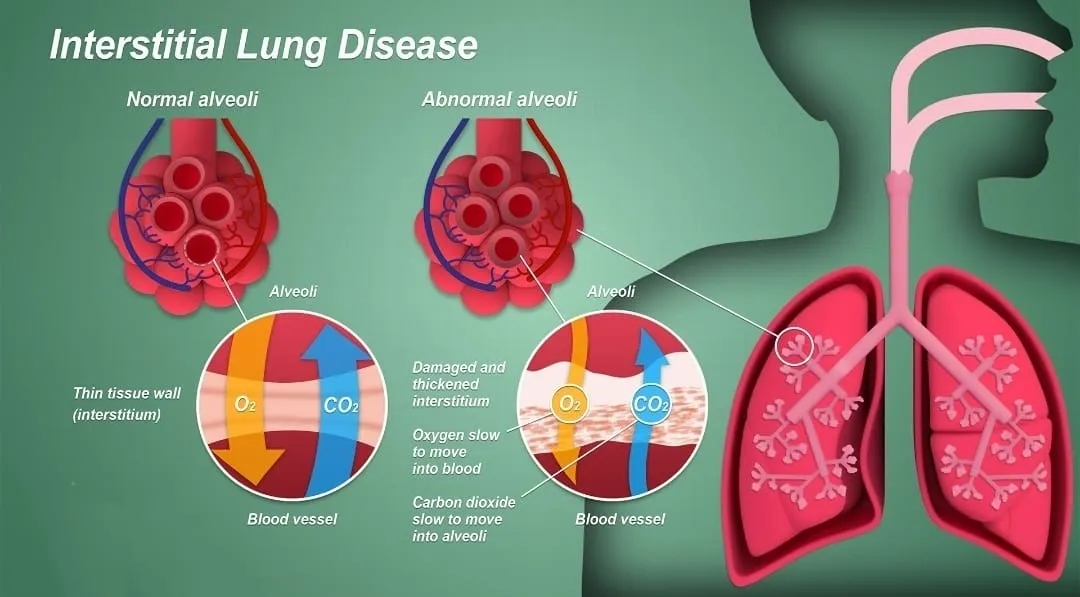Understanding ILD

ILD means Inflammatory/Interstitial Lung Disease
Interstitial lung disease includes different conditions that cause inflammation and scarring around the balloon-like air sacs in your lungs, called the alveoli. Oxygen travels through the alveoli into your bloodstream. When they’re scarred, these sacs can’t expand as much. As a result, less oxygen enters your blood and breathing becomes difficult due to stiffness in interstitum (lung tissue).
It refers to a group of about 100 chronic lung disorders characterized by inflammation and scarring that make it hard for the lungs to get enough oxygen. The scarring is called pulmonary fibrosis
Other parts of your lungs can be affected too, such as the airways, lung lining, and blood vessels.
The symptoms of this disease can vary person to person. However, the common symptoms includes:
1. Bronchiolitis: inflammation of the small airways (bronchioles).
2. Alveolitis: inflammation of the air sacs where oxygen and carbon dioxide exchange in the blood takes places (alveoli).
3. Vasculitis: inflammation that involves the small blood vessels (capillaries)
4. Shortness of breath, Fatigue, Weight loss and coughing
The causes are still majorly unknow. But this disease may be caused due to exposure to hazardous material for longer duration, such as coal dust or caused by any auto immune disease. It can be family history, or radiation therapy too.
Doctors use many methods to diagnose it, including the physical examination. lungs function test, CT scan, Biopsy of lung tissue, etc.
Treatment for ILD is designed to preserve the lung’s ability to function and keep the disease from getting worse. Treatment depends on many factors, including the type of ILD and how severe it is, and includes medications, lung transplant, oxygen therapy.
Many people with ILD have trouble breathing and a cough that does not go away. In more severe cases, complications can be life-threatening and include high blood pressure in the lungs, right heart failure, and respiratory failure (the lungs do not deliver enough oxygen to the body).
There is no way to prevent idiopathic ILD (affects after 60 years of age) or genetic ILD (passed down among family members), but it is possible to prevent some of the types with known causes.
THE BOTTOM LINE
Normally ILD is irreversible and requires continuous diagnosis and treatment through Pulmonary Doctor. People with mild ILD can slow down the disease with treatment and retain a stable condition. But for people with severe cases, the disease will become worse with time and regular treatments would be required for survival.
